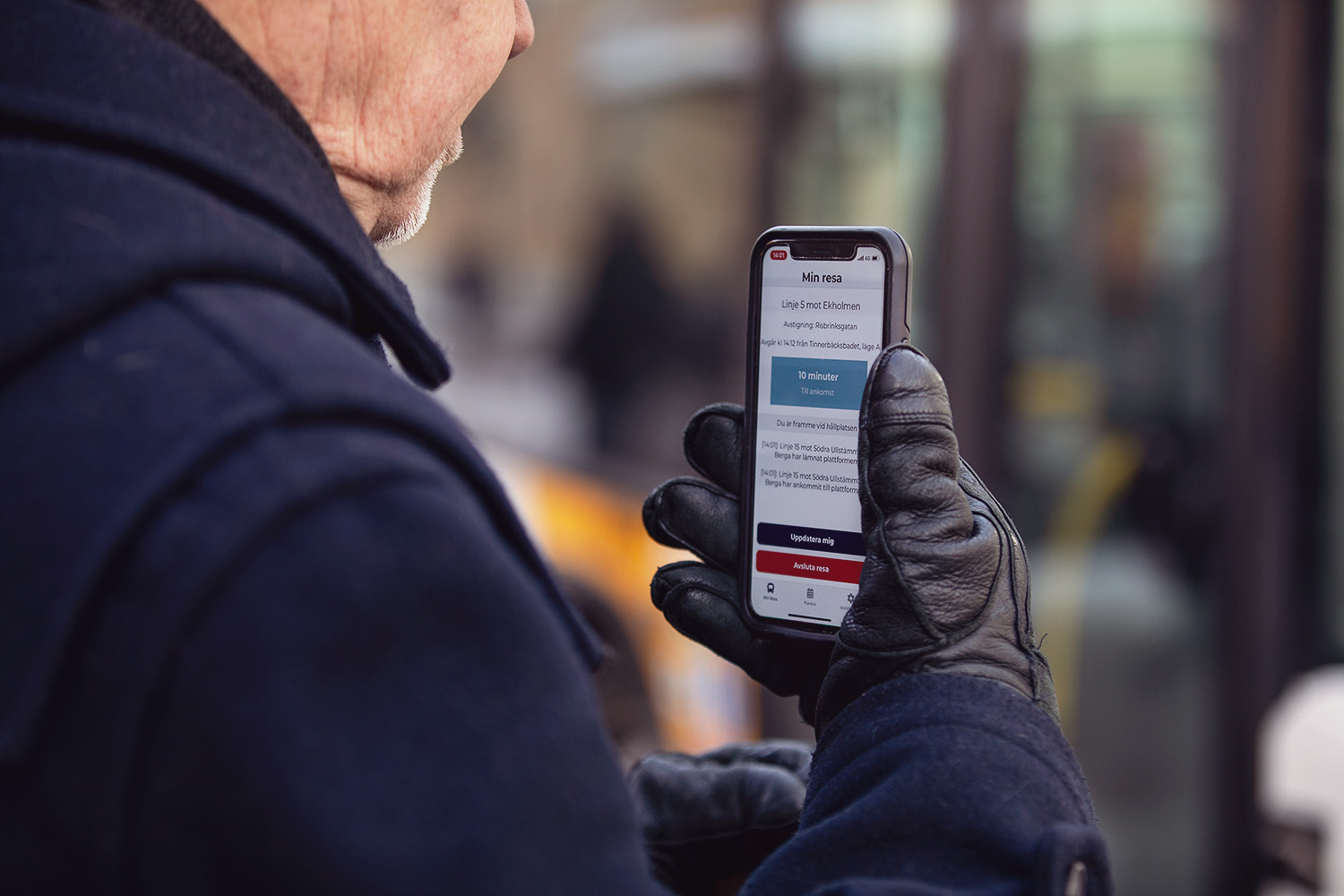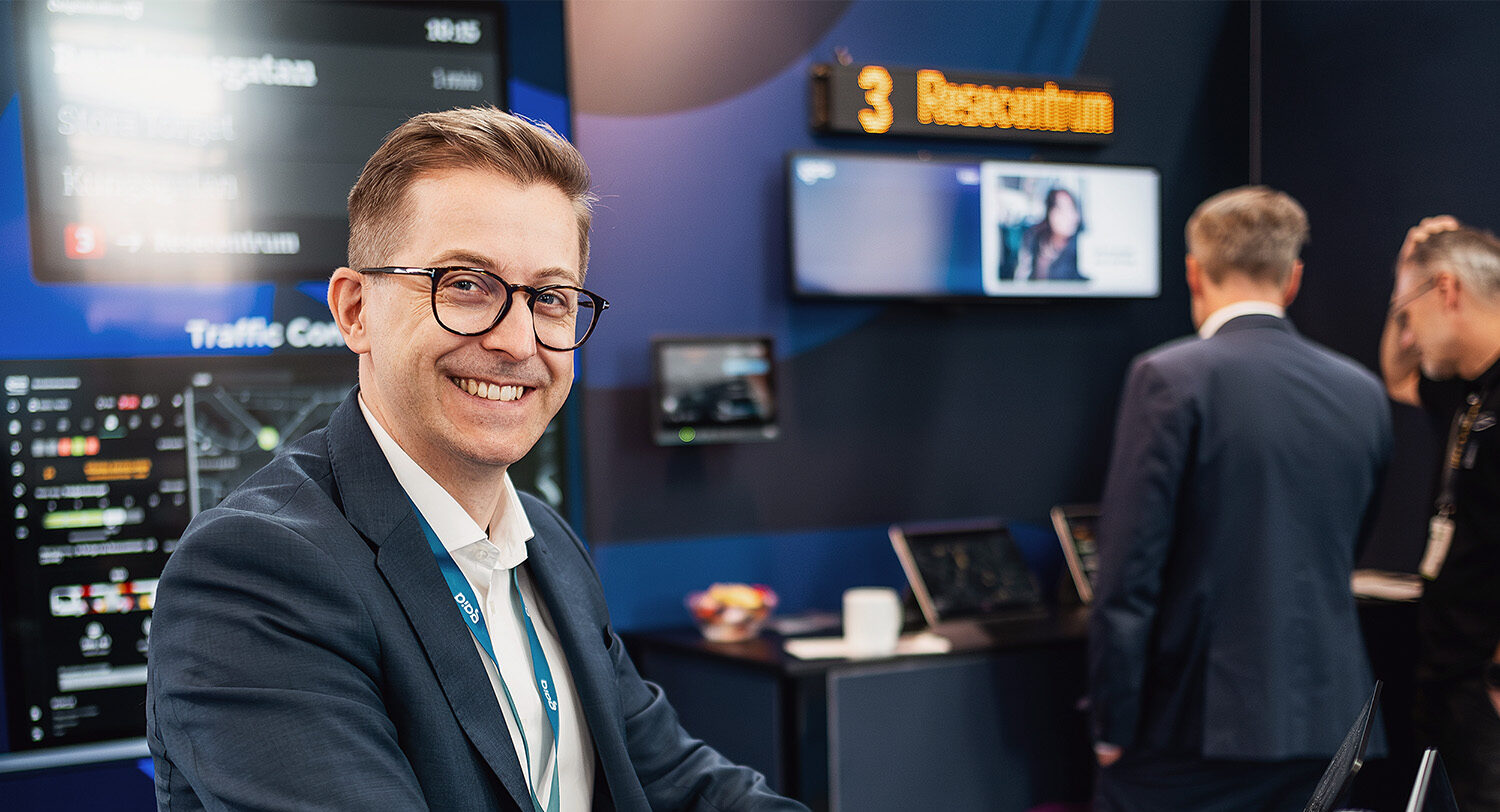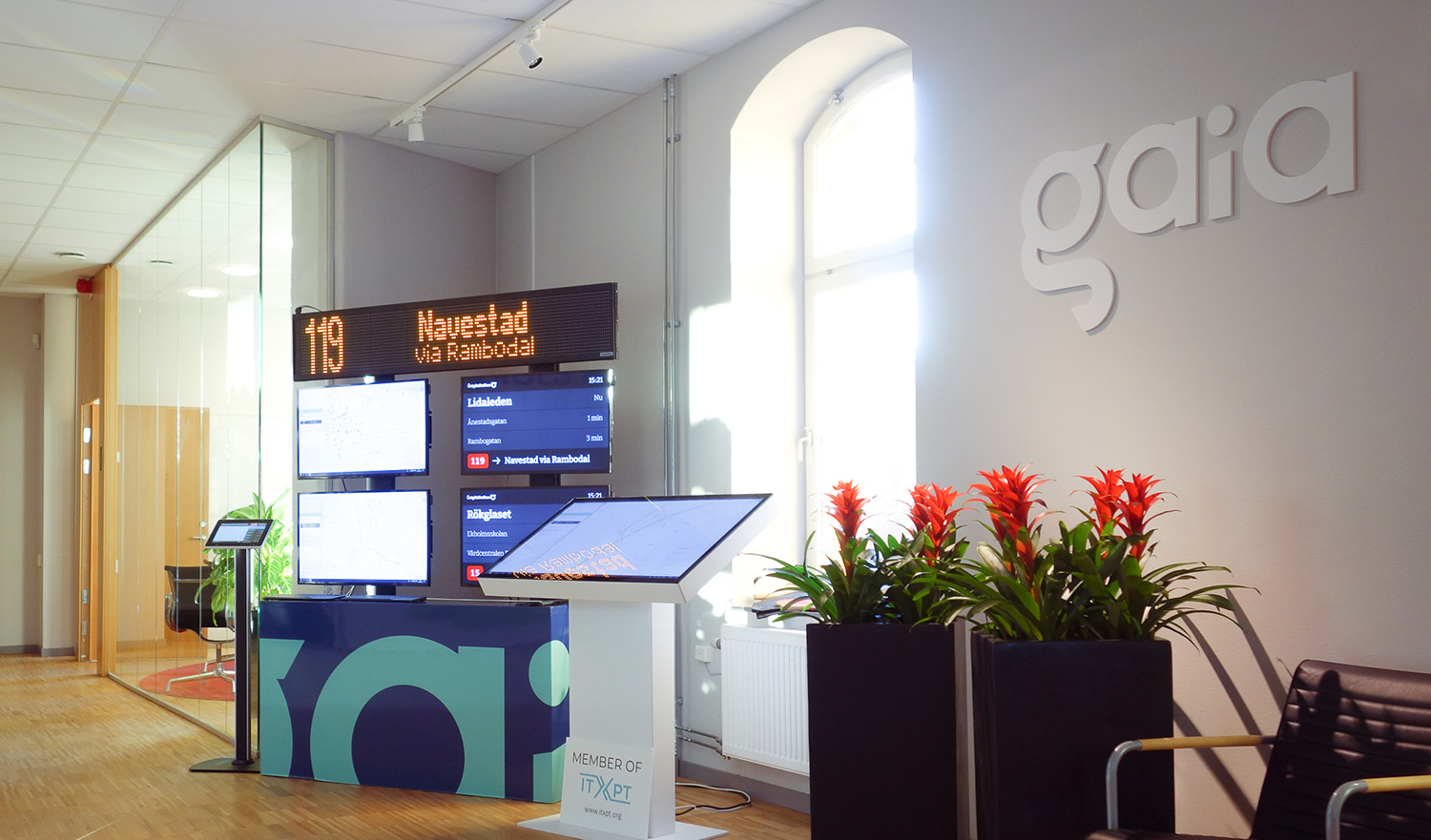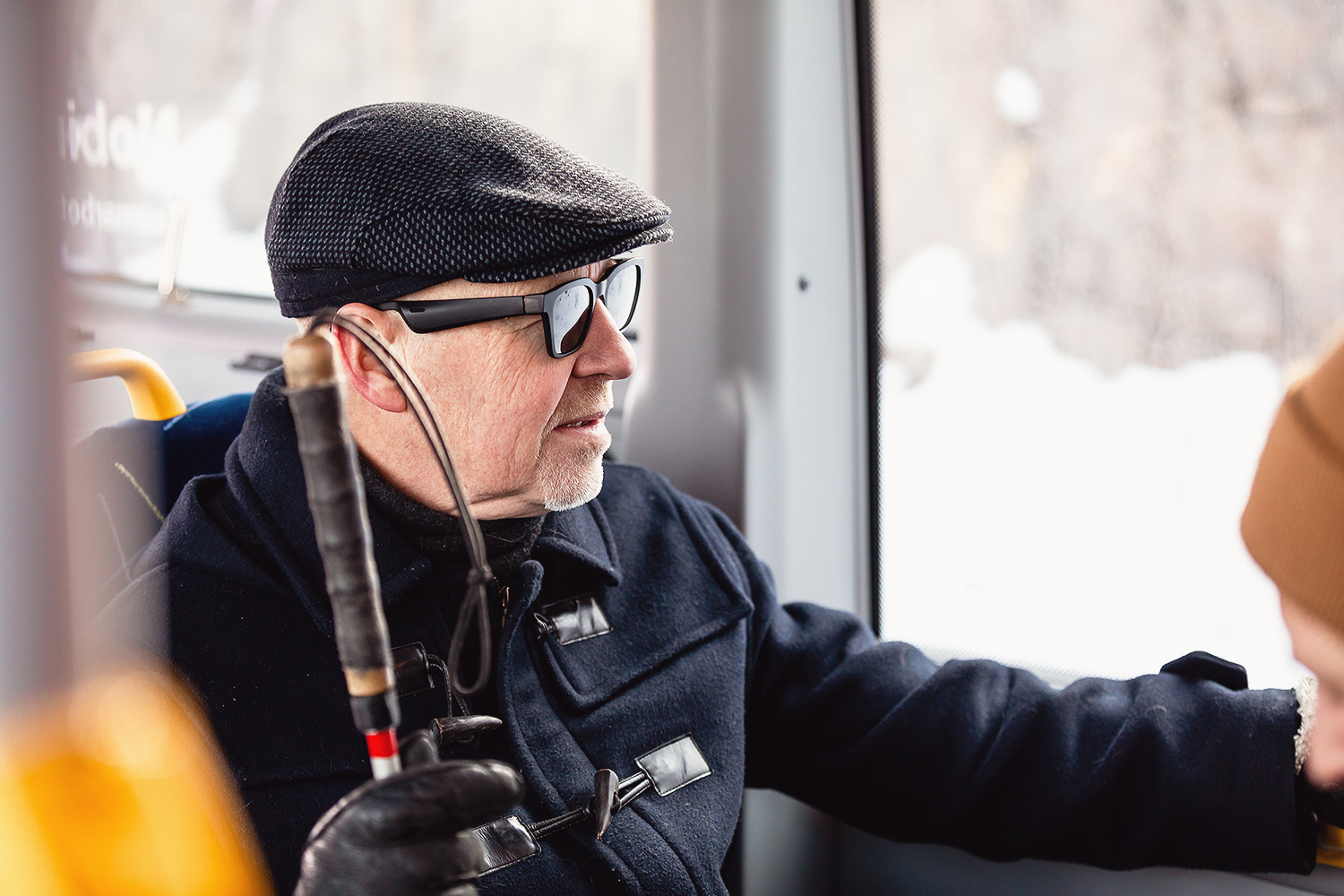Article
We can now enhance our digital aid to make public transportation even more inclusive
Published 2021-10-12
Public transportation should be accessible to everyone in society, but even today, there are challenges for people with special needs when traveling collectively. We want to change this. That’s why it’s exciting to announce that we have received additional funding from Vinnova to continue working on our project, Digital Guidance, in a second phase.
We have previously talked about the Digital Guidance project, where we worked on developing a tool to facilitate and increase public transport use for people with visual impairments. In the first part of the project, our focus was primarily on helping passengers board the correct vehicle, especially at long stops where multiple vehicles can stop in a row. In the follow-up project, our digital aid will help people navigate complex environments.
Complex environments for people with visual impairments
A complex environment for a person with visual impairment could involve large crowds at stops or move between bus stop positions at a travel center. To develop our digital aid for this project, we will work with mobile AR (Augmented Reality), open traffic data, digital twins, and expanded bus stop information in collaboration with our partners.

The app will now be further developed to guide people through complex environments.
Optimizing travel routes for passengers
With more information about stops from an accessibility perspective, such as potential passages and blocking obstacles, evaluating different options and planning the travel route best suited to an individual’s conditions is possible. For a visually impaired person, it could mean choosing a longer path over a crosswalk with sound signals instead of the shortest route without sound. With the help of information from flow measurements, it’s also possible to guide an individual around, for example, large crowds at a travel center.
More inclusive public transport
In the project, we want to make public transport more inclusive and ensure that even people with visual impairments can travel sustainably, both for the individual and for society.
“It’s very exciting that we can help one of the groups otherwise excluded with new technology. Digitalization opens up many opportunities, and that’s precisely where technology can be most beneficial.” says Fredrik Knutson, CTO at Gaia.
We are now ready to start the new project and look forward to showing more during the project’s progress.
In the video (in swedish), you can experience a journey with our digital companion and hear what Anders and Maria think about the app.




